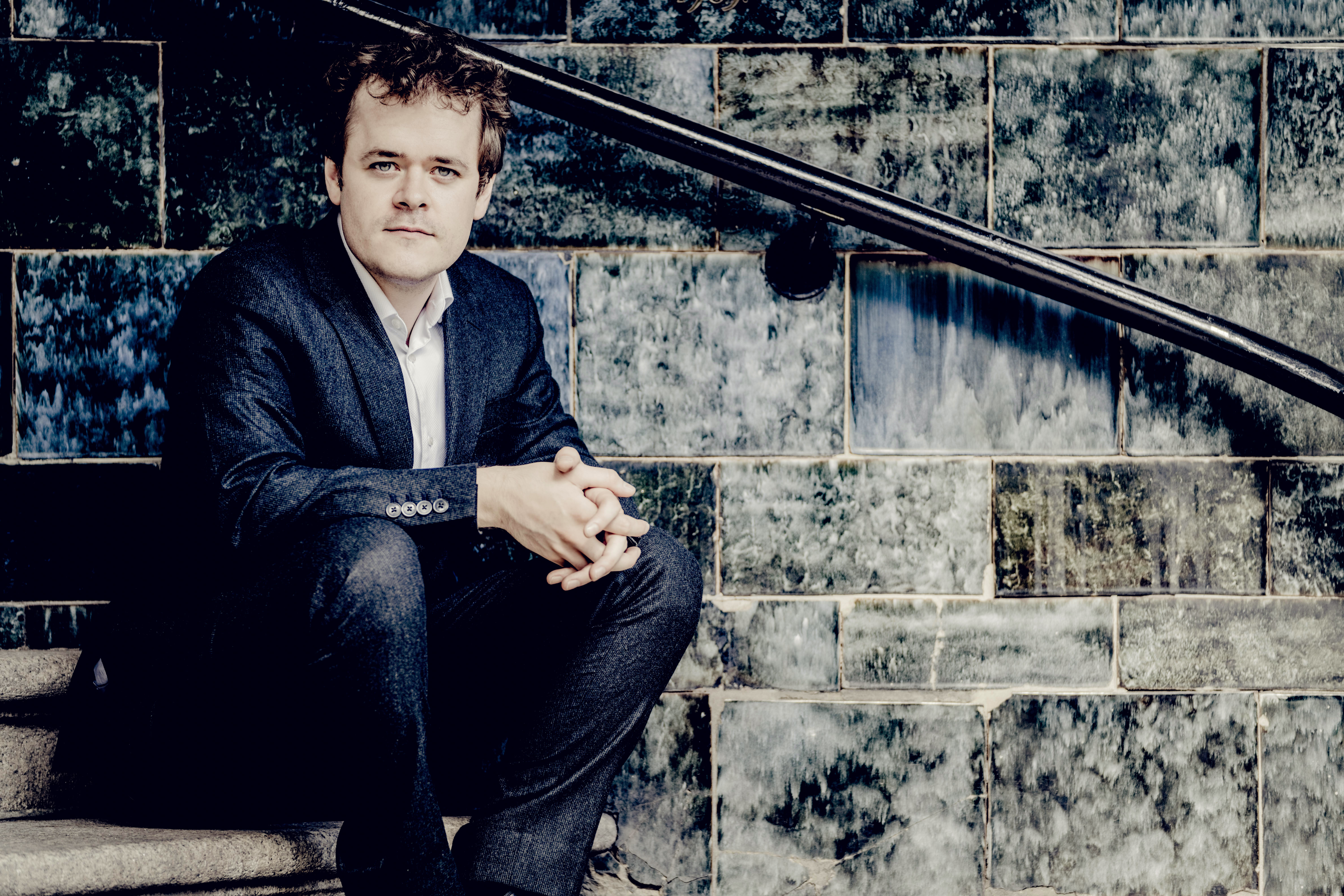By Lucy Caplan
Lucy Caplan is Assistant Professor of Music at Worcester Polytechnic Institute. Her first book, Dreaming in Ensemble: How Black Artists Transformed American Opera, will be published by Harvard University Press in 2025.
The implicit subject of this evening’s program might be said to be the artist’s muse: the figure whose mere presence galvanizes creativity, allowing another’s creative process to spring into action. Brahms’s Intermezzi were written with Clara Schumann in mind: a virtuoso pianist-composer in her own right, who was also something of a romantic obsession for Brahms. Mussorgsky’s Pictures at an Exhibition was inspired by the composer’s visit to a gallery of artworks by his beloved late friend, the painter and architect Viktor Hartmann. Robert Schumann’s Fantasie has a more nebulous genealogy. He conveyed to his wife-to-be, Clara Schumann, that it was an expression of his abounding love for her, yet the piece was originally conceived as a tribute to Beethoven, and it was dedicated to Franz Liszt.
The idea of the muse has a complex history, often relying on tired tropes of the male genius and the passive woman whose job is merely to inspire him. (The feminist author Germaine Greer flips the script, writing, “The muse in her purest aspect is the feminine part of the male artist, with which he must have intercourse if he is to bring into being a new work. She is the anima to his animus, the yin to his yang, except that, in a reversal of gender roles, she penetrates or inspires him and he gestates and brings forth, from the womb of the mind.”) Yet the concept might also be reimagined on more democratic or egalitarian terms, a way of acknowledging that no artist works alone. The “muses” of this program are friends and family, and they are all artists themselves as well. They tell a story less of one-directional inspiration than of the power of collaborative creativity.
Johannes Brahms, Three Intermezzi for Piano, Op. 117 (1892)
Brahms was active as a pianist throughout his career, playing in public from the time that he was ten years old. But he was an ambivalent performer; an introvert through and through, he declined to speak directly to the audience, and he had to be practically pushed back onstage to acknowledge applause. Nonetheless, it seems fitting that some of his final compositions were written for an instrument which had long been fundamental to his identity as a musician. Between 1892 and 1893, he composed four collections of piano pieces (Op. 116–119), which compressed enormous depths of feeling into brief works. Clara Wieck Schumann (whom Brahms likely had in mind as he composed them) exalted these pieces as “a true source of enjoyment, everything, poetry, passion, rapture, intimacy, full of the most marvelous effects…In these pieces I at last feel musical life re-enter my soul, and I play once more with true devotion.”
The three intermezzi that comprise Op. 117 are poignantly melancholic, situated in the shadows between sweetness and despair. The first is preceded by a few lines, in German, from a Scots lullaby titled “Lady Bothwell’s Lament”; its memorable opening melody, tucked into an inner voice in the piano’s middle register, sways to the rhythm of those words. The second is structured like a sonata in miniature, with a wistful, arpeggio-laden first theme juxtaposed against a serene second theme. The third intermezzo begins with the spare sound of a melody presented in octaves, then gradually fills out its harmonies. Like the first two intermezzi, it introduces a brighter contrasting theme in its middle section before eventually returning to the more mournful tones of its beginning.
Robert Schumann, Fantasie in C Major, Op. 17 (1838)
Before it was titled a Fantasie – with all the Romantic excess and expressivity that the name implies – this piece began its life as a “Sonata for Beethoven.” Spurred by a call for donations to construct a monument of Beethoven in Bonn, Schumann composed a grand sonata with the evocative subtitle “Ruins, Trophies, Palms” in 1836; he intended to donate the proceeds to the monument’s construction. But by 1838, he had changed his mind. He reconceived of the piece as a tribute to his deep love for Clara Wieck, whom he would marry two years later. “The first movement is probably the most passionate I have ever written,” he wrote to her, “a deep lamentation for you.” When it was finally published in 1845, the Fantasie bore a dedication to Franz Liszt, whose own freeform works for piano may have inspired its quasi-improvisational structure.
The Fantasie’s first movement bursts onto the scene, with an outpouring of pianistic energy in the left hand preceding a strong descending theme, voiced in octaves, in the right. Partway through the movement, the storm clouds part to reveal a curious interpolation: an archaic-sounding section labeled “In the Character of a Legend,” seemingly unrelated to what came before. In time, the movement’s development section resumes, inviting the listener to reinterpret that apparent interruption as just one of the movement’s many sudden fluctuations in mood. The second movement begins heroically, with broadly spaced chords that are soon overtaken by a tumble of dotted rhythms. In the third movement, Schumann shares with us his most intimate voice. The bravado of the first two movements falls away in favor of singing melodic lines, gentle accompaniments, and a sense, at last, of peace.
Modest Mussorgsky, Pictures at an Exhibition (1874)
Mussorgsky’s first compositions, written when he was a young child, were attempts to create musical parallels to the Russian folktales he heard from his caretaker. This storytelling impulse would later come to characterize his resolutely original style as a composer. His most celebrated works laud the narrative power of the human voice: his many songs offer vivid dramatic portraits of their protagonists, and his opera Boris Godunov has become a staple of the repertory. Although Pictures at an Exhibition does not feature vocal performance, it exemplifies his penchant for vivid, often programmatic music. The piece was composed as a tribute to his close friend Viktor Hartmann, whose untimely passing at the age of 39 devastated Mussorgsky. Pictures offers a musical response to a posthumous exhibit of Hartmann’s paintings in St. Petersburg; its ten movements each correspond to a drawing or watercolor. Because some of the artworks have since been lost, Mussorgsky’s music takes on additional commemorative significance.
Pictures has been orchestrated by Maurice Ravel and several other composers, and it is most often heard today with a full palette of instrumental color. Its original instrumentation for solo piano highlights the singular, vibrant, sometimes odd character of Mussorgsky’s musical ideas. The piece begins with the first articulation of a recurring “promenade” theme, whose alternating 5/4 and 6/4 measures are meant to convey an onlooker striding purposefully through the gallery. “Gnomus” depicts a creepy imaginary creature, whose darting movements are conveyed by rapid switches of key. A mysterious atmosphere surrounds the lilting melodies of “The Old Castle,” while “Tuileries” evokes the intricate loveliness of the Parisian garden by way of playful staccato passages. “Bydlo,” whose title is the Polish word for cattle, trudges solemnly along, staying mostly in the piano’s lower register; its counterpart is the bubbly, delicate “Ballet of Chicks in Their Shells.” The next movement is known as “Samuel Goldenberg and Schmuyle,” and is thought to correspond to two portraits of Jewish men owned by Mussorgsky. “The Market at Limoges” is a vibrant, almost frenetic scherzo in ternary form, and it leads directly into the “Catacombs,” introduced by a procession of weighty block chords. Next we travel to the supernatural world of Baba Yaga, the witch whose hut stands on chicken legs. The final piece is “The Great Gate of Kiev,” which depicts the grandeur of the structure with expansive, hymnlike themes.





